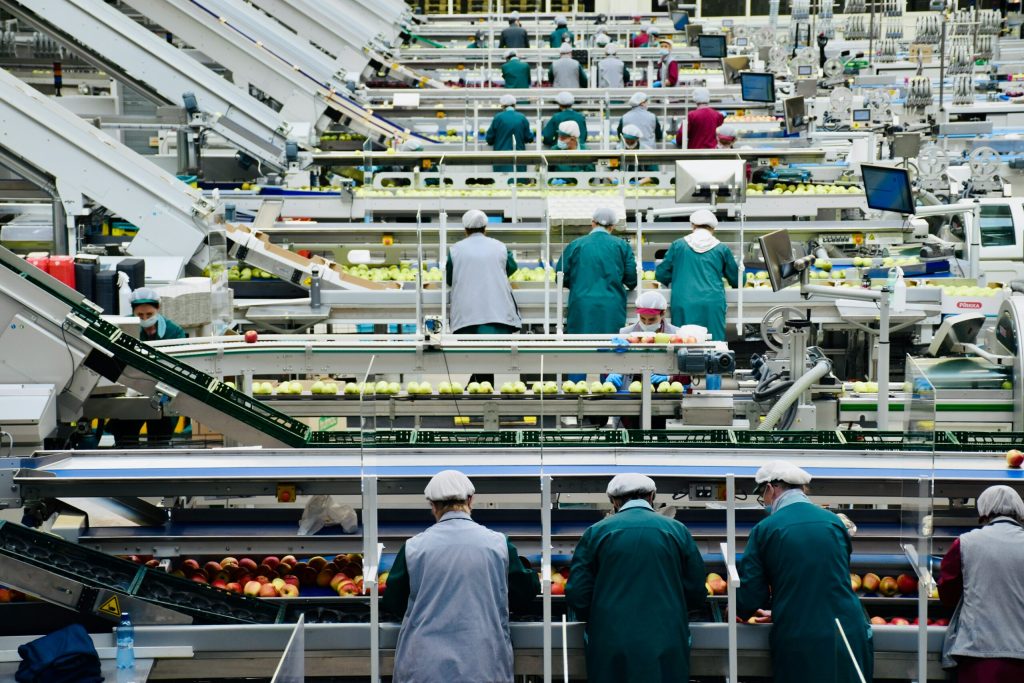The world of industry has come a long way from the era of manual labor to the age of automation. With the emergence of Industry 4.0, the focus is now on creating an interconnected, digitized, and automated manufacturing ecosystem – with robotics at the heart of the system.
Robotics has now become an essential technology for Industry 4.0. In other words, robotics refers to the use of robots to perform tasks instead of human workers. Thanks to advances in robotic technology, it is now possible to automate even complex and repetitive tasks, thus increasing productivity and efficiency in manufacturing processes. However, implementing a robotic solution presents challenges, but the benefits far outweigh them – further strengthening its strategic role in industrial evolution.
What is Industry 4.0?
Industry 4.0, or the Fourth Industrial Revolution, refers to the ongoing transformation of traditional manufacturing processes through the integration of digital technologies, automation, and data-driven decision-making.
This revolution has transformed supply chains and manufacturing operations through digitization, the Internet of Things (IoT), big data analytics, artificial intelligence (AI), robotic solutions, and automation.
The benefits of robotics
The role of robotics is crucial as it can potentially revolutionize manufacturing operations in several ways.
Increased productivity
Robots allow manufacturers to automate complex and repetitive tasks that were previously performed by humans. Unlike human workers, machines operate continuously, without the need for rest or downtime, resulting in faster production rates, shorter cycle times, and higher output.
Improved quality
Using a robotic solution in manufacturing processes improves product quality by reducing the risk of human error. Overall, integrating robotics into manufacturing procedures has a significant impact on Industry 4.0 by improving product quality and responding more effectively to customer demand.
Reduced costs
Implementing a robotic solution leads to significant cost savings for businesses. By automating tasks that require human intervention, the use of robots reduces labor costs.
What’s more, the machines operate in high-risk environments, limiting the use of expensive safety equipment and reducing the number of accidents involving humans.
Enhanced Safety
Replacing human workers in hazardous environments with robots results in fewer workplace accidents and injuries. Moreover, the enhanced safety measures provided by robotics create a safer working environment for employees.
Flexibility
Another important benefit of using robots is the flexibility they provide. With the ability to reprogram robots to perform different tasks, manufacturers can quickly adapt to changing market demands.
As a result, companies can respond more rapidly to customer demands and stay ahead of the competition.
Challenges of Robotics in Industry 4.0
While the benefits of integrating robotics into businesses and operations are numerous, there are several challenges that need to be considered:
High cost
One of the most significant challenges is acquiring and maintaining robotic technology. The initial investment required to deploy robots can be costly, and maintenance costs can also accumulate quickly.
Specialized skills
The successful implementation of a robotic solution requires technical skills, such as programming, maintenance, and troubleshooting. The availability of qualified personnel can be a major challenge, as there is an increased need for trained individuals in this field.

Cybersecurity risks
As manufacturing systems become more automated, cybersecurity risks increase. Programmable robots and other connected devices are particularly vulnerable to cyberattacks, leading to data breaches and significant financial losses.
To overcome these challenges, careful planning and execution are necessary. Companies must adopt a comprehensive strategy that addresses all potential issues related to integrating robotics into their manufacturing processes. This involves investing in training to develop specialized skills among employees, thoroughly assessing the costs and benefits of deploying robotic technology, and ensuring that strict cybersecurity measures are in place to mitigate risks.
Different Robotic Solutions available
In the industrial sector, different types of robots can be used, each offering unique features and capabilities to optimize manufacturing processes.
Industrial robots
These robots are the most commonly used machines in manufacturing. They are highly precise, can work for long hours without interruption, and perform tasks such as welding, painting, and assembly.
Collaborative robots
Robots designed to work alongside human operators are called collaborative robots (Cobots). These robots are equipped with sensors that allow them to detect human presence and adjust their movements accordingly. They are ideal for tasks that require human-robot interaction, such as packaging and material handling.
Mobile robots
These robots are designed to move around a factory or warehouse. They are equipped with sensors and cameras to navigate and avoid obstacles. They are ideal for material handling, transportation, and inventory management.
In the era of Industry 4.0, businesses can gain considerable advantages by using different types of machines. Indeed, industrial robots enhance productivity and quality, collaborative robots facilitate human-robot interaction, while mobile robots optimize material handling and transportation.
Explore the impact of robotics on Industry 4.0. Understand its importance for innovation, efficiency and competitiveness of modern businesses.















